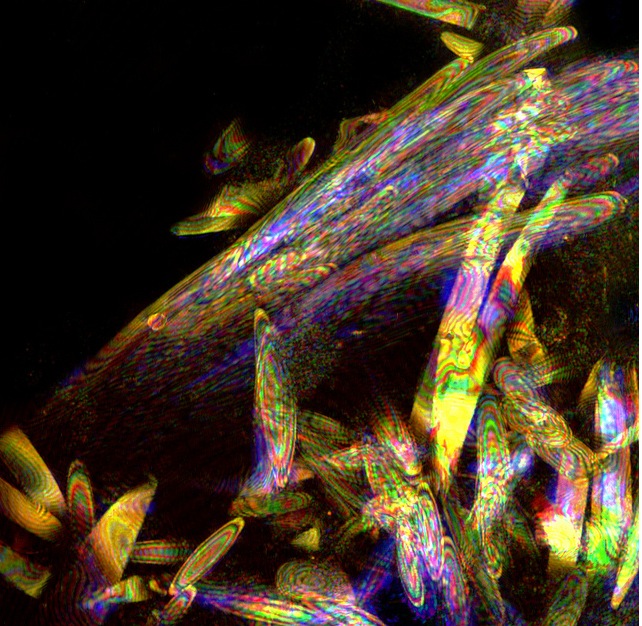Team:Cambridge
From 2011.igem.org
Nature’s colours don’t just come from pigments, but from structure too. Cephalopods camouflage themselves using intracellular, iridescent structures made of proteins called reflectins. These are the only known proteinaceous materials that use thin film interference to generate colour. They are inspiring a new class of responsive optical materials.
We hope to demonstrate the potential of reflectins as photonic materials by producing optical devices which exhibit instantaneous colour change. In addition we intend to characterise export pathways in E. coli and optimise protein production for commercial viability. We will submit constructs for the expression of reflectins in a variety of organisms.
Our team is producing a report examining the impact of iGEM, focusing on innovation in the biotechnology industry. Alongside this we are contributing to Gibthon, a collection of software tools aimed at fragment library management and construct design, building on standards developed by previous Cambridge teams.
Don't forget to follow us on Twitter, and if you would like to sponsor Team Bactiridescence please take a look at our brochure.
Bactiridescence - An Overview
We have two principle branches to our main project: in vivo studies, in which we will be investigating the properties of reflectin protein in live bacteria, and in vitro studies, in which we will be investigating the properties of reflectin protein that has been extracted from E. coli.
In vivo, we believe that we will be able to engineer the reflectin gene such that it can be expressed in E. coli in a ‘properly folded’ state, something that has never been achieved before. We will then attempt to bind the protein to form an iridescent coating over the surface of the bacteria, creating what we term ‘bactiridescence’. If we could then control the colour changing behaviour of the reflectin, this could be a game-changing step for the future of biosensors.
In vitro, we are confident that we can use the protein to make thin films with interesting optical behaviour (including colour change when someone breathes on it!) as well as diffraction gratings, which are virtually defect-free. There has already been an account of similar experiments in previous research, but we will be looking to extend it substantially. For example, we would like to create multi-layered thin films, which more accurately imitate the ‘natural’ arrangement of reflection in squid tissue, and chemically induce colour changes, in ways that haven’t previously been attempted. These advances are necessary if reflectin is ever to be used in a commercial application.
In addition, we are keen to expand the field of synthetic biology by making improved software tools. Our new open-source web-based software tool, PyGen, will be used for sequence manipulation and display, also integrating related applications already available on the web (including Gibthon, created by Cambridge iGEM 2010). It is specifically designed to improve on areas in which current researchers find fault with current software; we are conducting extensive research among the international iGEM community to ensure that it is consumer oriented. The open-source philosophy is deeply ingrained in the spirit of iGEM as well.
You can see our first pictures of reflectin thin films here
 "
"

